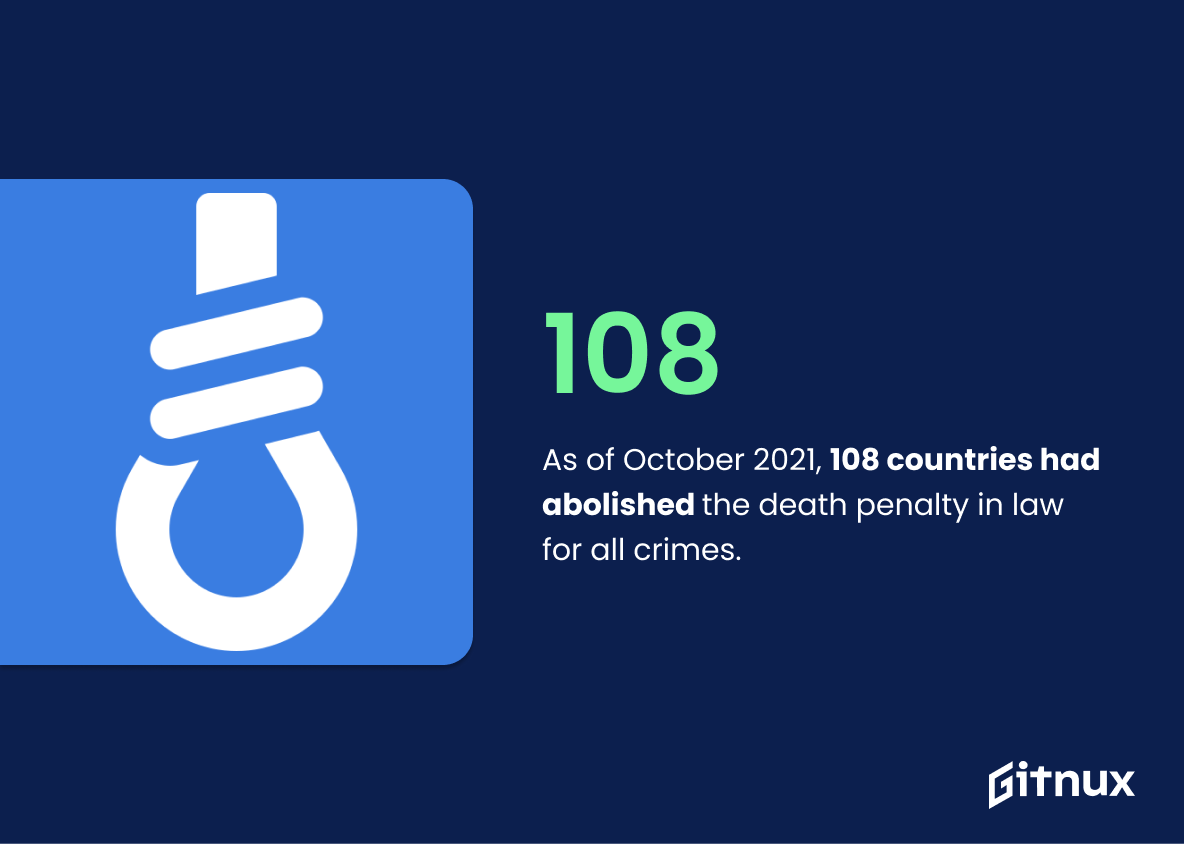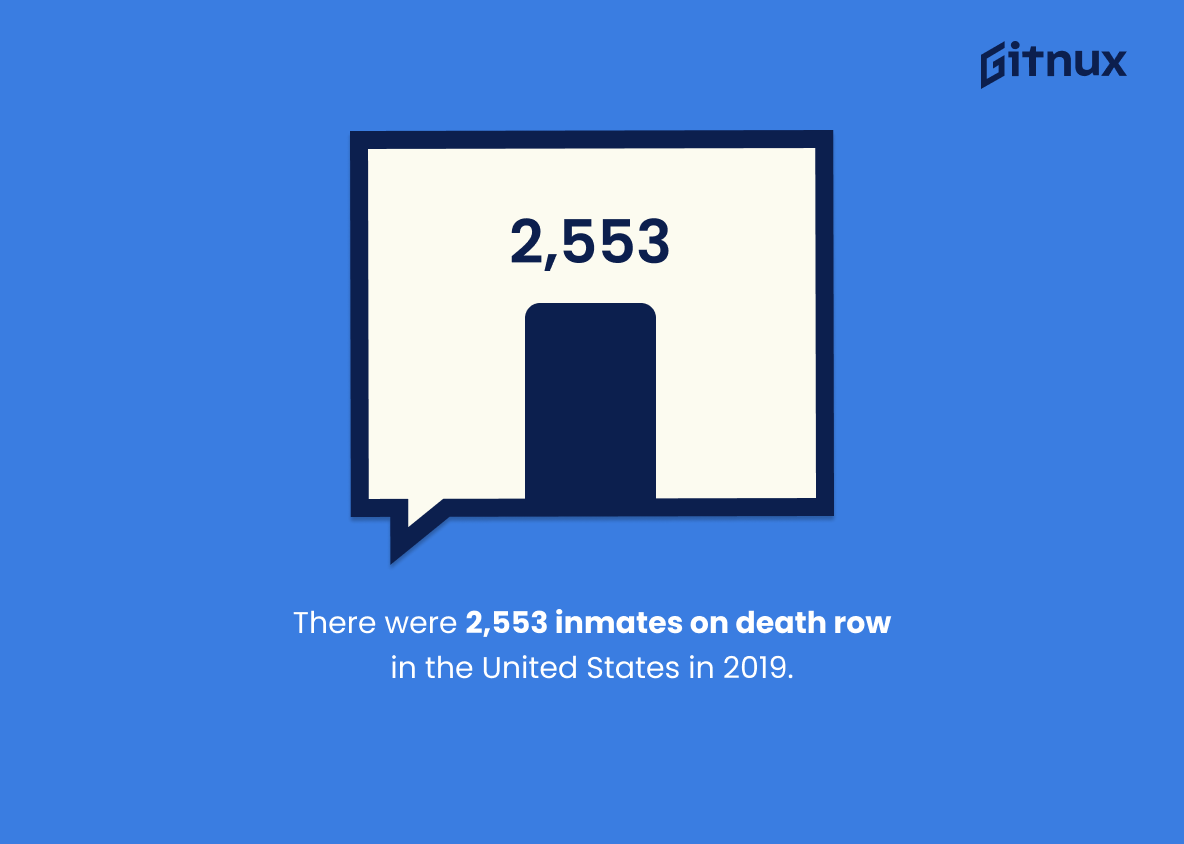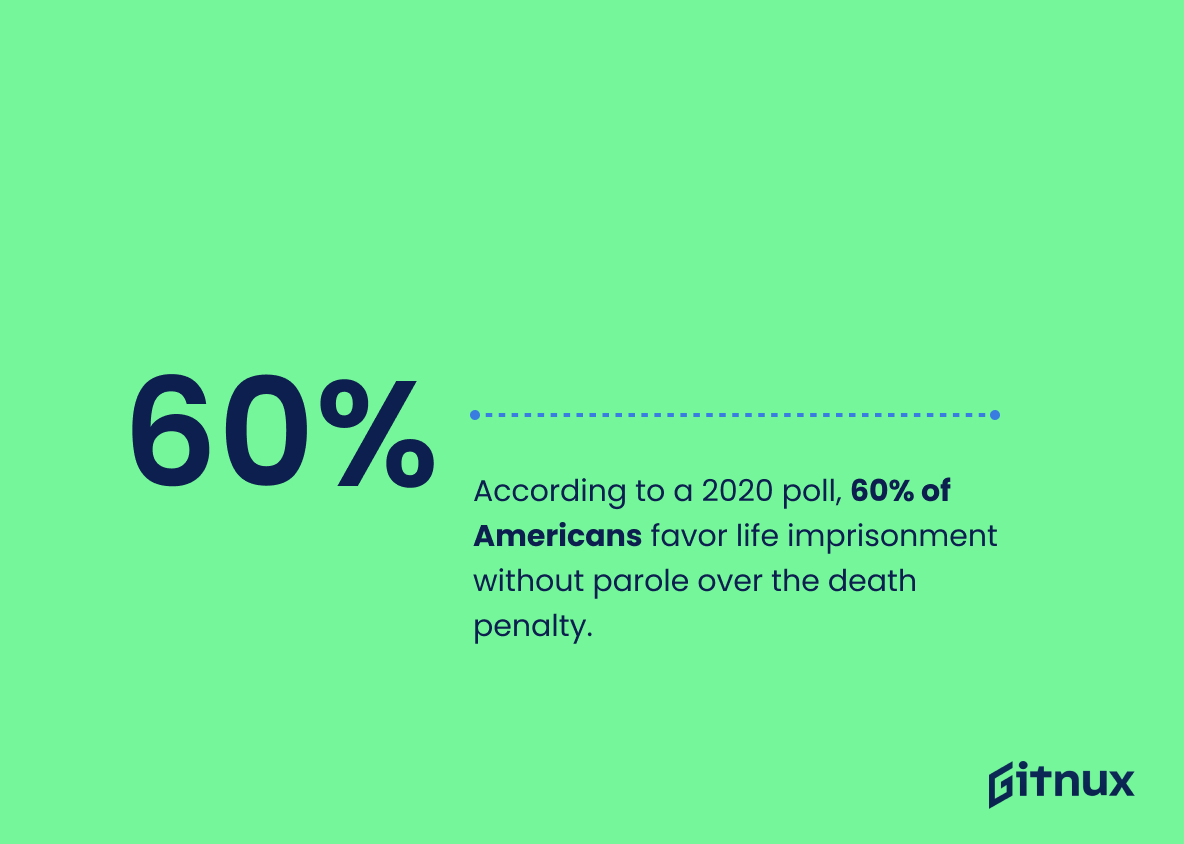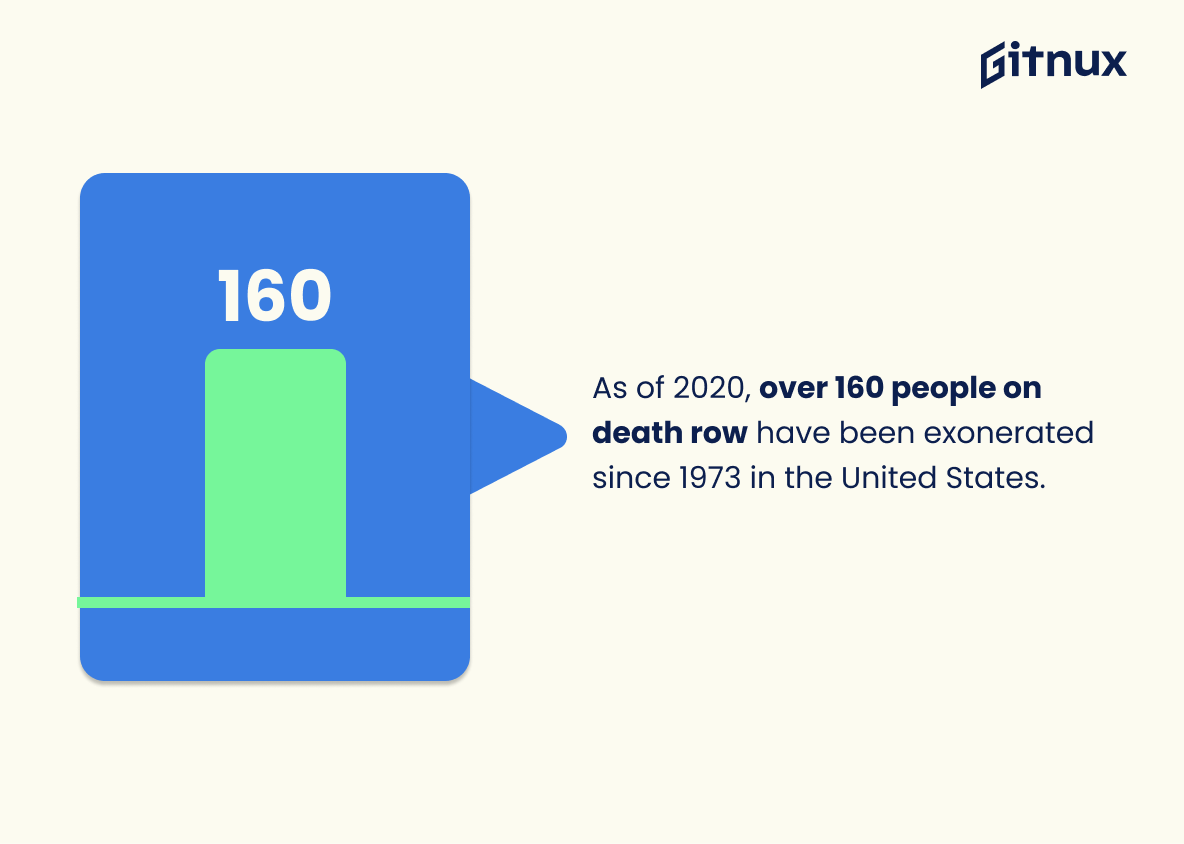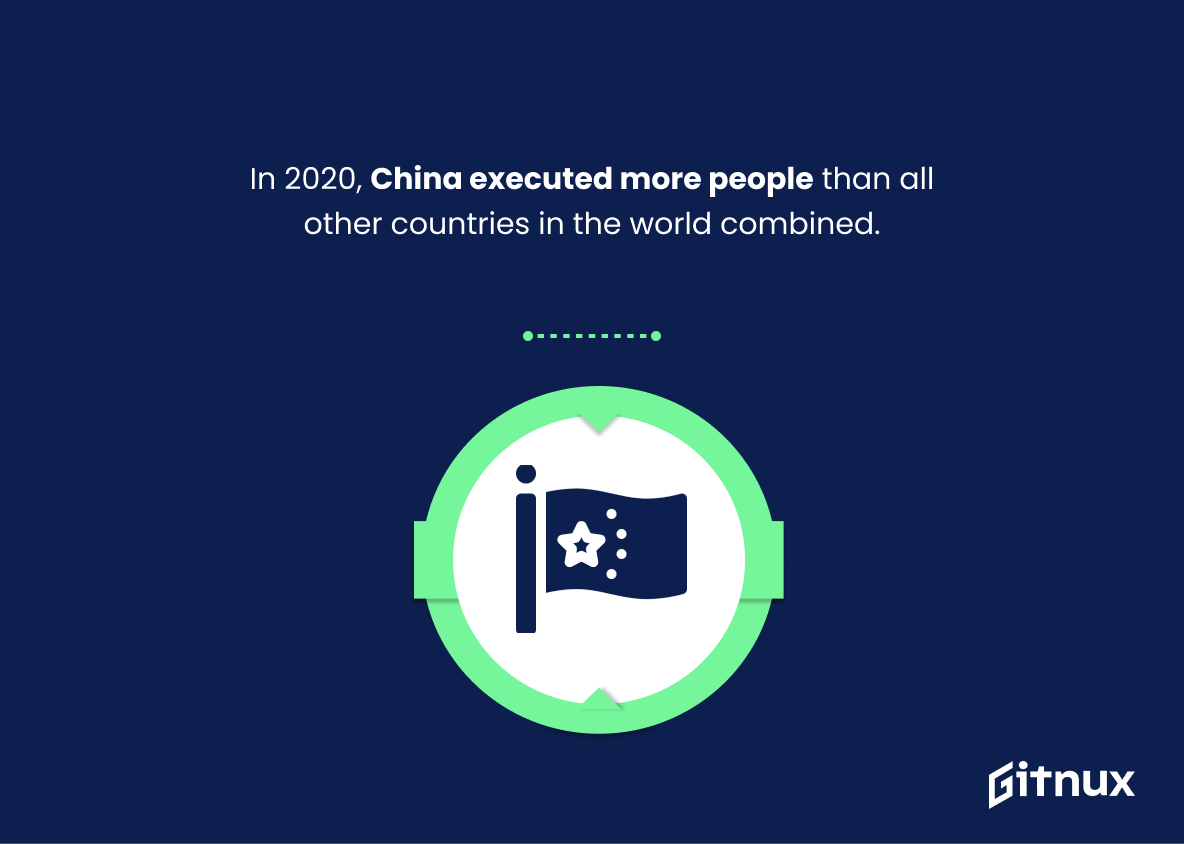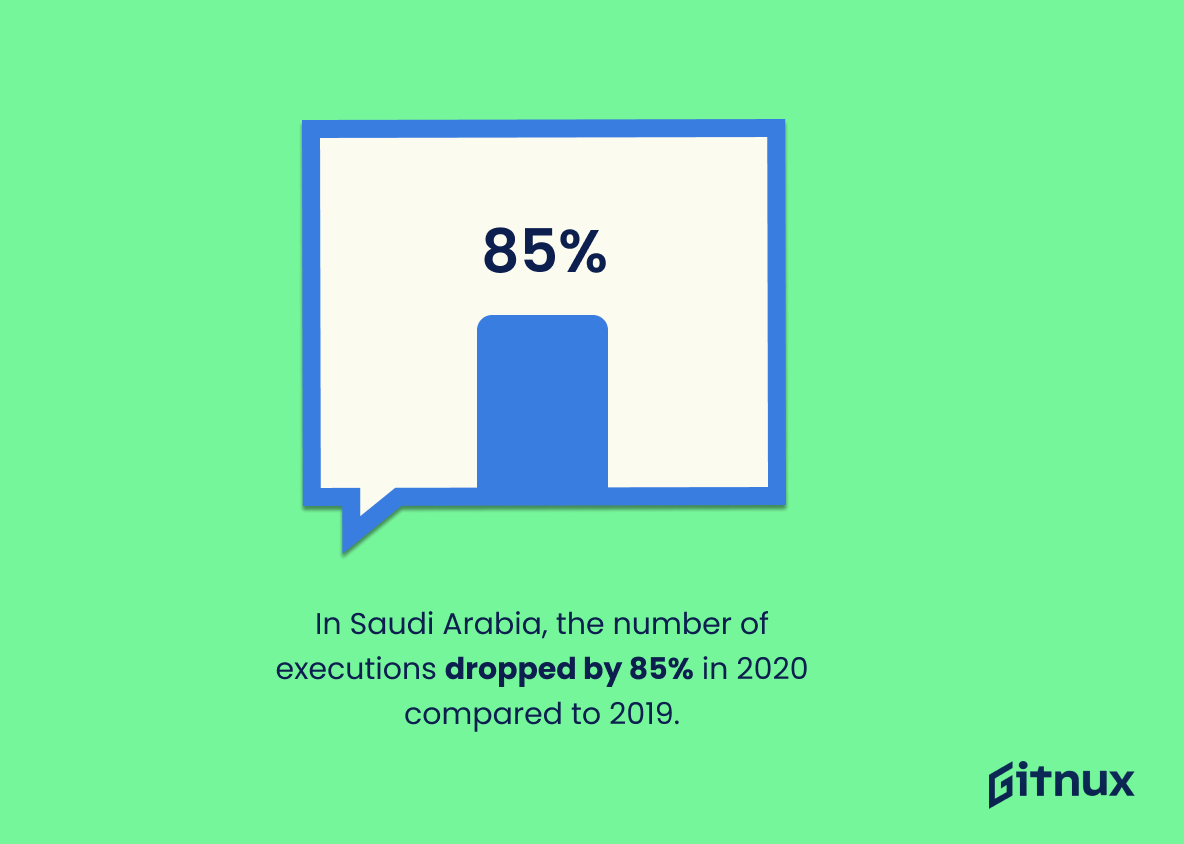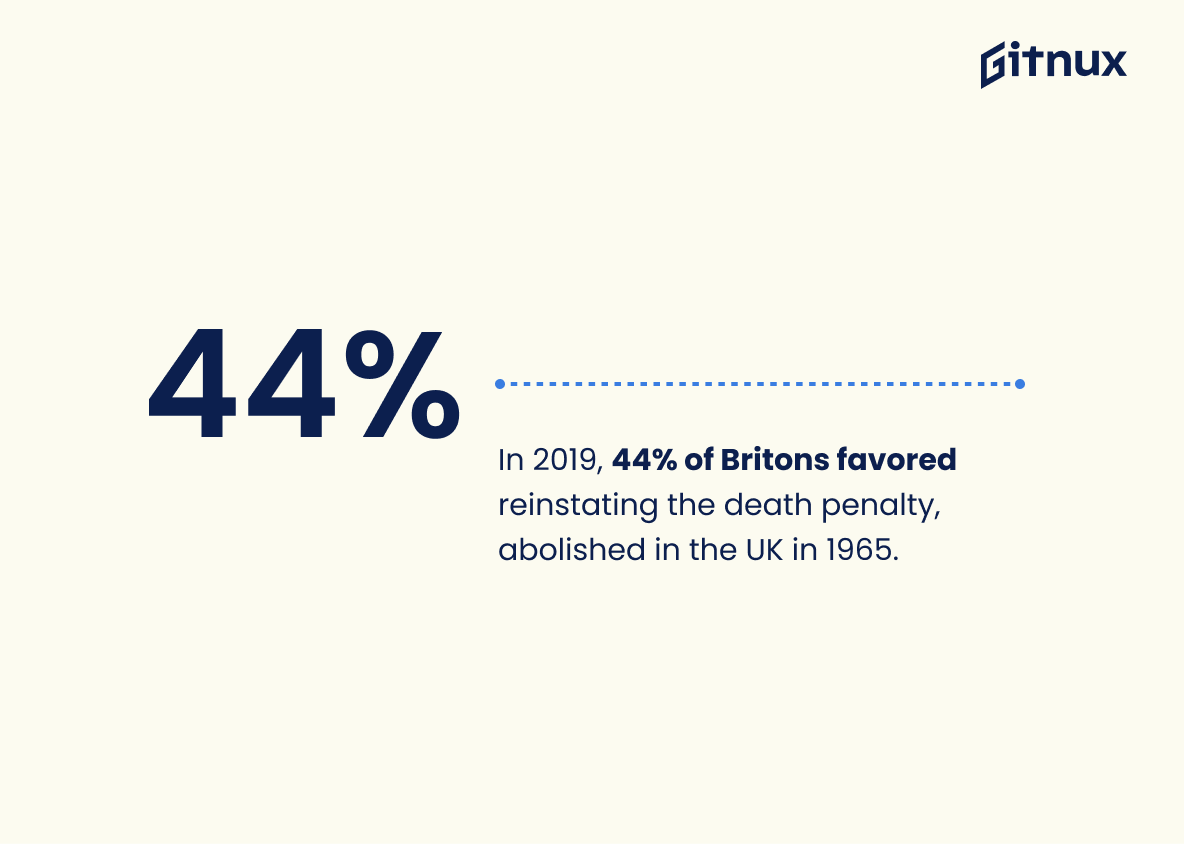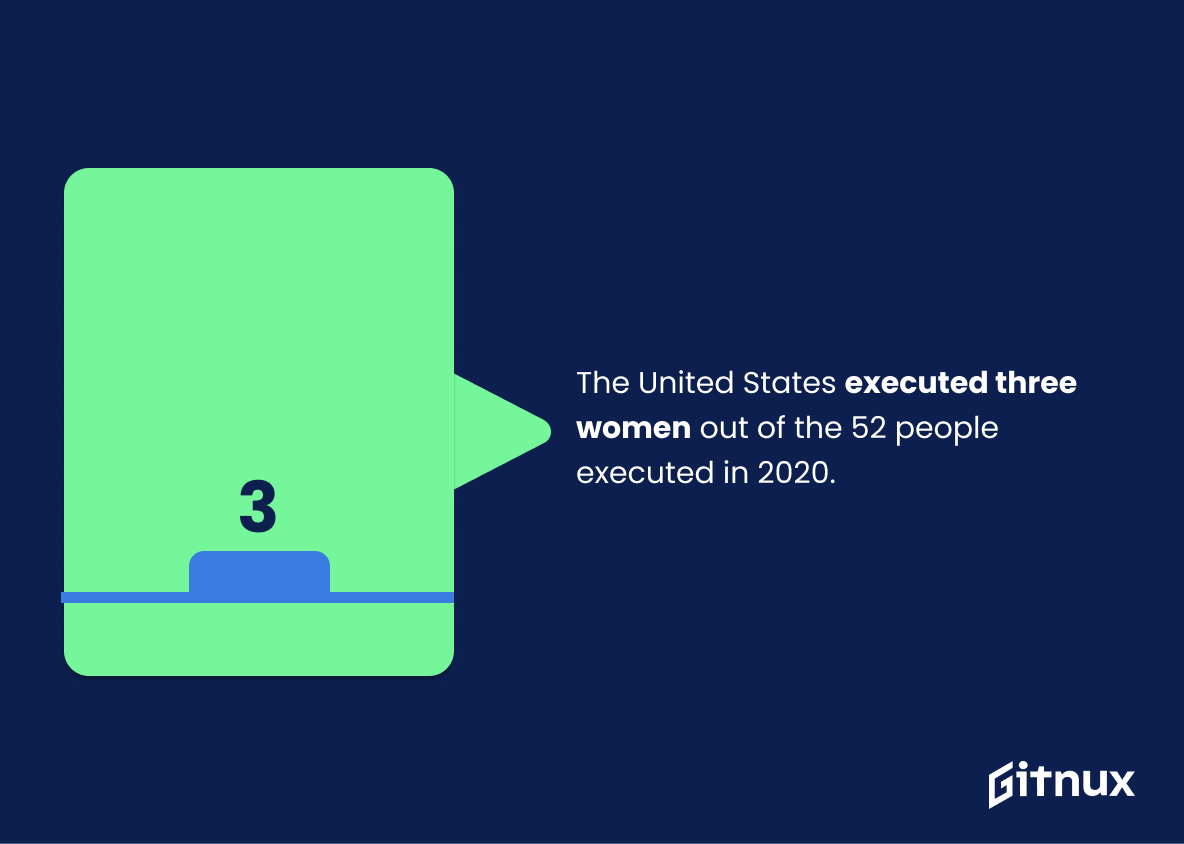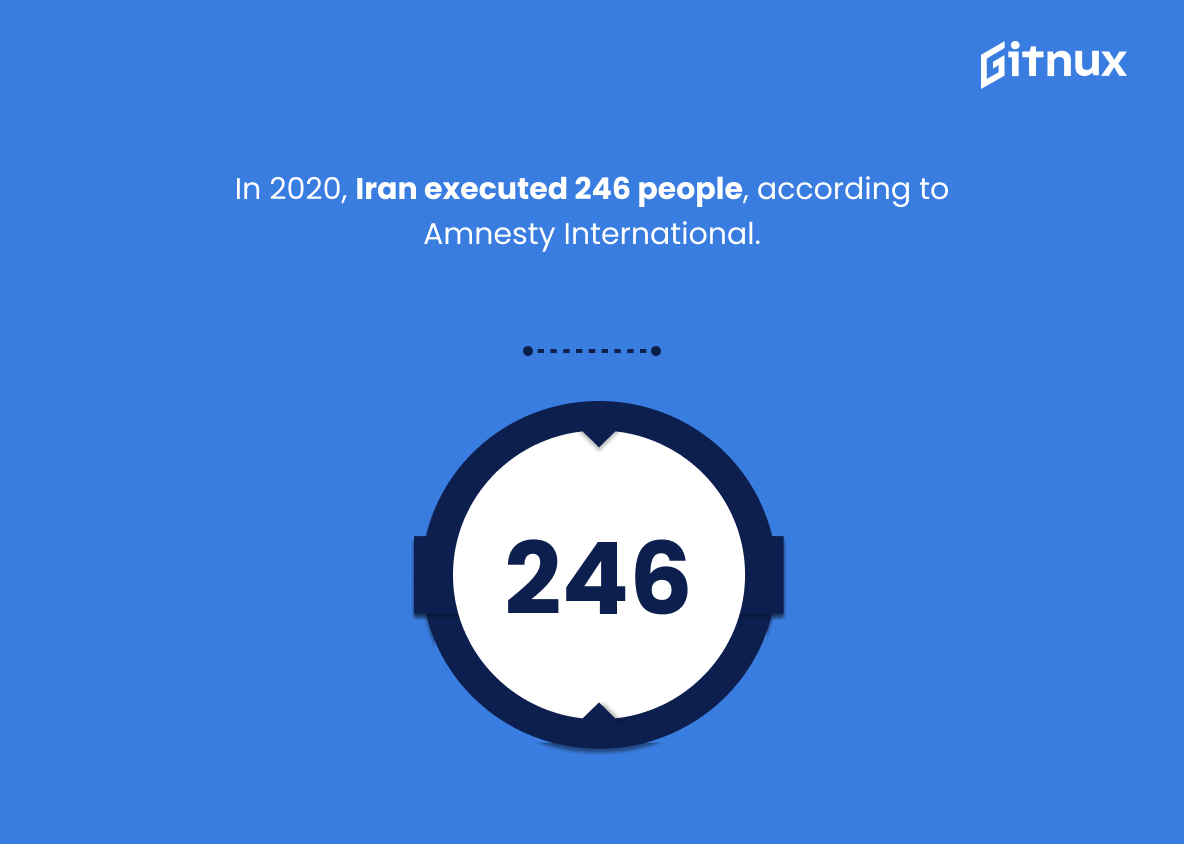As the debate rages continuously on the ethics and efficacy of the death penalty, the need for informed discussions has never been more paramount. This blog post aims to shed light on the intricacies surrounding the controversial topic, by delving into comprehensive death penalty statistics.
We’ll navigate through historical trends, regional variations, and global progressions, providing an expansive yet nuanced viewpoint. Whether you’re a staunch abolitionist, a fervent supporter, or a curious onlooker, these numbers will present you with a fresh and well-rounded perspective on capital punishment across the globe.
The Latest Death Penalty Statistics Unveiled
As of October 2021, 108 countries had abolished the death penalty in law for all crimes.
In the vast tapestry of global death penalty statistics, the account of 108 countries abolishing capital punishment for all crimes as of October 2021 offers a striking narrative. It illustrates a potent shift in international legal norms and the progressive view of crime and punishment. This transformation is a key thread within the blog’s broader discourse, illuminating the broader consensus moving against capital punishment.
Furthermore, it provides a reference point in assessing the geographical and political distribution of capital punishment policies across the globe. Such a vital statistic enables readers to ponder the philosophical, ethical, and societal implications that have led to such a significant change while encouraging engagement with the further intricacies of the death penalty discourse.
There were 2,553 inmates on death row in the United States in 2019.
In painting a comprehensive picture of Death Penalty Statistics, the figure stating that there were 2,553 inmates on death row in the United States in 2019, serves as a pivotal cornerstone. This figure is not only a mirror reflecting the harsh reality of the criminal justice system, but it also acts as a barometer indicating the intensity of capital punishment application in the country.
It’s a chilling testament to the number of lives hanging in the balance, awaiting their potential demise at the hands of the state. This disturbing revelation acts as both a metric of our society’s punitive measures and a source of potent discourse fueling the ever-raging debate over the morality and effectiveness of the death penalty.
According to a 2020 poll, 60% of Americans favor life imprisonment without parole over the death penalty.
In the realm of death penalty discourse, the cited 2020 poll revealing 60% of Americans as proponents of life imprisonment over capital punishment underscores a discernible shift in public sentiment. This pivotal statistical perspective imparts a nuanced layer to the blog post about death penalty statistics, highlighting that the popularity of a hitherto dominant standpoint is gradually ossifying.
The statistics serve as a poignant reflection of growing favor towards alternatives to death penalty and become the vanguard of a potentially transforming American criminal justice landscape.
As of 2020, over 160 people on death row have been exonerated since 1973 in the United States.
“Peering behind the curtain of justice, this statistic reveals a chilling narrative. The exoneration of over 160 individuals on death row from 1973 through 2020 unveils a sobering reality—”innocence” and “guilt” are not always unmistakable. Despite the finality of the death penalty, where a reversal is impossible, America’s judicial safeguards have identified individuals who were wrongfully condemned.
It underscores the inherent risk of irrevocable mistakes within the current judicial system. Such data, spotlighting a staggering number of individuals saved from the brink of death, underscores the urgent need to meticulously scrutinize the efficacy and morality of death penalty implementations.”
In 2020, China executed more people than all other countries in the world combined.
Painting with a brush dipped in numbers, this statistic creates a vivid and alarming portrait of the use of the death penalty in the world today. Undeniably, it acts as a stark reminder that China, despite its progress and economic advancement, remains firmly anchored in a punitive tradition that much of the world is moving away from. It provides a chilling backdrop to a discussion of global death penalty statistics, throwing into sharp relief the divide between countries that continue to embrace this controversial form of punishment, and those that have chosen to eliminate or minimize its use.
This is not simply a fact; it’s a narrative boiled down into a single sentence, telling readers that, in 2020, the scales of capital punishment were tipped heavily by a single nation. This statistic becomes a wake-up call for human rights advocacy, inciting discussions on the necessity or even the ethics behind such a penalty. Furthermore, it prompts us to question the cause behind such high execution rates – the quality of legal representation, the criterias for punishment, and even the role the cultural or political climate plays.
In the context of a blog post about Death Penalty Statistics, this statistic is not only significant but pivotal. It showcases the dramatic disproportion in how the gravest of jurisdictions are applied globally, stimulating reflection, debate, and even action among those who encounter it.
In Japan, 113 people were on death row at the end of 2020.
Shining a spotlight on the statistic of 113 people on death row in Japan at the close of 2020, becomes a powerful cornerstone, framing the narrative of the death penalty statistics around the globe. It is not just a number, it breathes life into the concept of death penalty, nudging the reader’s perspective towards the ongoing debate on its necessity and efficacy.
This particular statistic perhaps is an exposition of Japan’s stance on capital punishment, acting as a comparative scale to perceive other countries’ standpoints on the same. It can effectively spark discussions about the ethical, moral, and legal implications related to capital punishment, thereby expanding and enriching dialogue in the blog post.
In Saudi Arabia, the number of executions dropped by 85% in 2020 compared to 2019.
Painting a vivid image of the shifting sands in death penalty perspectives, this dramatic 85% decline of executions in Saudi Arabia in 2020 compared to 2019 is a testament to the sheer potential for socio-political change. It quantifies the tangible impact of policy reforms or changes in penal strategies, illuminating the waves they can send through an entire justice system. It offers a beacon of progress in the otherwise grim context of capital punishment, implying the possible influence of human rights advocacy or international pressure.
Furthermore, underpinning such a sharp alteration within a year might echo deeper transformations within the societal values or legal structures, a speculation worth delving into. Hence, it serves as a crucial data point in the composite sketch of global death penalty statistics, and a conversation starter for reforms and their efficacy on this contentious issue.
According to a 2019 survey, 44% of Britons supported the reintroduction of the death penalty, which was abolished in the UK in 1965.
Delving into the realm of death penalty attitudes, the nuanced layers of public opinion in the UK become quite evident through a compelling piece of data. This 2019 survey reveals a remarkable revelation: almost half of Britons – 44% to be precise – are inclined towards the reintroduction of the death penalty, a draconic measure removed from the nation’s legal provisions since 1965.
Undeniably, this statistic serves as a potent eye-opener in a dialogue on death penalty statistics, as it illuminates lingering ambivalence or controversy within a seemingly progressive society and amplifies the voices of those who believe in its reinstitution. The figure not only adds substance to the discourse, providing a basis from which arguments can be built and comprehended, but it also nudges the reader to explore the broader societal, legal, and moral aspects surrounding the death penalty.
The United States executed three women out of the 52 people executed in 2020.
Delving into the dissection of the statistic that only three out of the 52 people executed in the United States in 2020 were women, offers an intriguing perspective on the relationship between gender and capital punishment. Such numbers serve as a window into the fascinating world of gender-based disparities, potentially displaying an underbelly of biases, conscious or unconscious, within our judicial system.
The strikingly low proportion of women facing capital punishment can sprout crucial debates about whether gender plays a role in the mirroring of crime, conviction, and consequent execution. It is instrumental in sparking a nuanced conversation about the death penalty, making it effective ‘food for thought’ in a blog post about death penalty statistics.
In 2020, Iran executed 246 people, according to Amnesty International.
A glimpse into this number reveals a chilling reality that places the spotlight on Iran’s stance on the death penalty. The somber revelation that Iran executed a shocking 246 people in 2020, as reported by Amnesty International, lays bare a profound aspect of the country’s judicial approach. Through the looking glass of death penalty statistics, it becomes starkly evident that Iran firmly holds onto capital punishment as a form of justice.
Offering a global comparison and underlining the pressing human rights concerns, this number is a cog in the larger machine of our blog post discussing death penalty statistics. The statistic amplifies the need for dialogue and potentially, reform, acknowledging that behind each digit lies a life, a story, and an echo of societal values.
In 2015, nearly 54 of every 1 million people were sentenced to death in Pakistan.
The potency of this startling figure, that in 2015, nearly 54 of every 1 million people were sentenced to death in Pakistan, cannot be understated. When we look through the lens of death penalty statistics, it not only helps us to comprehend the grim reality of capital punishment in a country but also serves as a mirror that reflects the nuances of a society’s legal and justice system.
Taking into account this specific figure, it acts as a powerful anchor in any discussion about the frequency of capital punishments, enabling the reader to grasp the stark reality and thus, paving the way for deeper, more impactful conversations about justice, humanity, and penal reform.
In 2020, Egypt tripled executions from 2019 with at least 107 people put to death.
Highlighting the significant uptick in executions in Egypt from 2019 to 2020 provides a stark illustration of the variable nature of state-sanctioned death penalties across the globe. The statistic anchors the blog post, plunging the reader into the sobering reality of fluctuating death penalty trends, which can potentially be influenced by governmental changes, policy shifts, or even global incidents.
Moreover, it underscores that the application and intensity of capital punishment is unique to each region, thereby emphasizing the need for continued dialogue and understanding of this complex, contentious issue.
In 2019, sub-saharan Africa recorded a 36% reduction in the execution of the death penalty compared to 2018.
Examining the decrease in the execution rate in Sub-Saharan Africa by 36% in 2019 from 2018 enables us to illuminate shifting global trends and perceptions about the use of the death penalty. This particular statistic acts as a potent barometer for human rights progress in the region and potentially indicates a growing inclination towards alternative punitive measures.
Consequently, within the framework of a blog post on Death Penalty Statistics, this statistic serves as a cornerstone, highlighting the dynamism of policy change across geographical boundaries and timeframes.
Conclusion
Crunching the numbers on death penalty statistics provides invaluable insights into the complex intricacies of this controversial form of punishment. As we’ve explored, these statistics hold a mirror up to our society, exposing stark realities about race, class, and the justice system itself. However, they also spotlight an ongoing global shift as more nations turn away from capital punishment.
While the debate carries on, understanding these figures gives us the ammunition to discuss, dispute, and ultimately decide on the validity of the death penalty. As we continue to scrutinize and assess these statistics, it’s essential to keep in mind that they represent not just abstract figures, but human lives.
References
0. – https://www.yougov.co.uk
1. – https://www.www.washingtonpost.com
2. – https://www.www.amnestyusa.org
3. – https://www.www.bbc.com
4. – https://www.www.aclu.org
5. – https://www.news.gallup.com
6. – https://www.www.bjs.gov
7. – https://www.www.japantimes.co.jp
8. – https://www.english.alaraby.co.uk
9. – https://www.www.aljazeera.com
10. – https://www.www.amnesty.org
